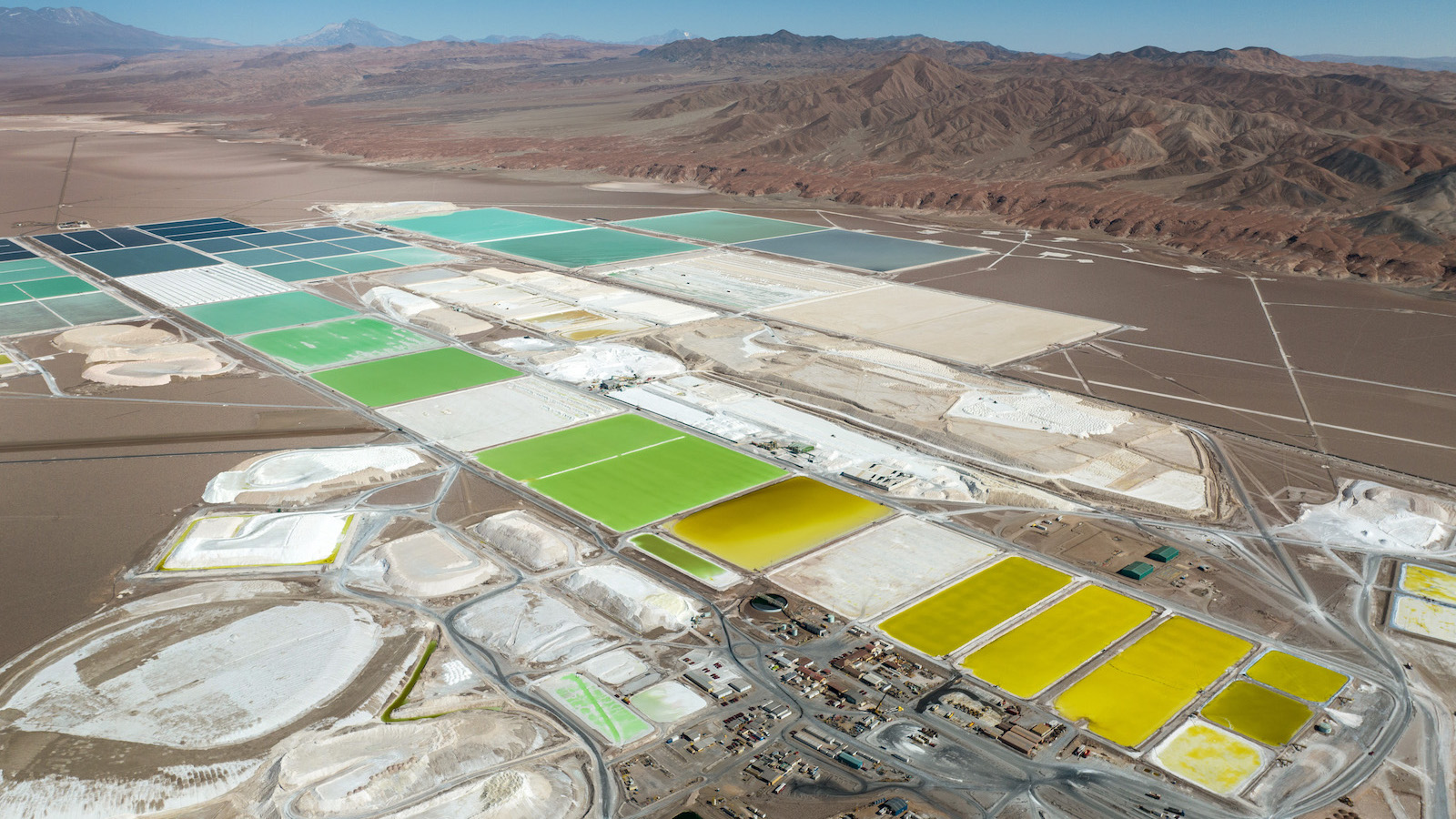There are few minerals that play as pivotal a role in the global energy transition as lithium. The silvery white, soft, reactive metal is particularly good at storing energy, which is why it is used in all commercial electric vehicle batteries today and is unlikely to be replaced by another material anytime soon. The demand for lithium batteries is expected to grow more than five times by 2030.
Recognizing its strategic importance, economic potential, and its environmental consequences, President Gabriel Boric of Chile, the world’s second largest producer of the metal, announced plans in late April to increase state participation in the country’s lithium industry.
“The main aim of this policy,” said Pedro Glatz, who was a senior advisor to the Chilean Ministry of the Environment until two months ago and was not involved in crafting the policy, “is to provide more wealth, well-being, and welfare to the Chilean people.”
But Indigenous communities and environmental defenders who live near Chile’s lithium resources question whether this wealth-building and the growth of the global electric car industry should come at the expense of their water, homes, and a critical ecosystem.

Over half of the world’s known lithium deposits are located where Chile, Bolivia, and Argentina border one another. Situated within the Andes, parts of the area are drier than anywhere in the world outside of Antarctica. The region is often referred to as the Lithium Triangle because of its mineral-rich salt flats, which form when large pools or shallow lakes of water accumulate on plateaus or between mountain ridges and evaporate. Lithium revenue accounted for nearly 2 percent of Chile’s annual gross domestic product last year.
In announcing his intention to grow the government’s oversight of the lithium industry, Boric delivered on a campaign promise he made in 2021. Under the new framework, the state will capture more revenue by mandating that private companies partner with public agencies for all future mining contracts. Subject to congressional approval, Boric also hopes to create a publicly owned national lithium company.
Notably, the policy also takes a more ambitious approach to environmental standards across the lifecycle of the industry. The government will create a public research institute to develop new refining technologies, and institute lithium waste and battery recycling.
But critics question whether the plan will do enough to protect the Lithium Triangle from the high costs of extraction.
Currently, lithium in Chile is extracted by drilling holes in the salt flats and pumping brine to the surface, which is then left to evaporate in large artificial ponds for months at a time. The method has depleted water levels in a region already suffering from a climate change-induced megadrought, affecting local farmers, pastoralists, and a critical wetland ecosystem that supports three iconic flamingo species.

In response to Boric’s announcement, a coalition of Indigenous peoples, environmental activists, and researchers called the Plurinational Observatory of Andean Salt Flats, or OPSAL, released a statement titled “Salt flats are not mines, salt flats are wetlands.”
OPSAL is worried that lithium extracted from Chile and other South American countries will be primarily used for private electric vehicles in the European Union, the United States, and China, which they call “a false solution to climate change that benefits the most polluting economies of the planet.” They argue that such a solution wouldn’t meet the mobility needs of the majority of the world’s inhabitants, and that attempting to replace all internal combustion engine cars with electric vehicles would create unnecessary sacrifice zones along lithium mining corridors.
Earlier this year, a report from the Climate and Community Project found that expanding public transportation infrastructure and reducing car battery sizes could reduce lithium demand by up to 90 percent in the U.S., suggesting that it’s possible to address the climate crisis while simultaneously protecting Indigenous rights and biodiversity.
Glatz, the former environmental ministry adviser, said that the Chilean government’s active participation in the lithium industry could give it more leverage in international discussions about lithium demand. “If countries want to use these resources, we could be negotiating concessions, both in terms of climate debt, but also in the ways lithium is being used,” he told Grist. “It might be a better use of that lithium to provide batteries for public transportation in the global south, rather than to support an unsustainable lifestyle in the global north, and it’s a shame that these ideas are not in the discussion today.”
OPSAL welcomes increased state participation and hopes that the government will center the Andean salt flats and wetlands in its management of the lithium industry. Boric’s lithium strategy explicitly acknowledges territorial and environmental concerns, and includes a plan to conserve 30 percent of the salt flat region. But OPSAL wants the government to go further by adopting an international convention that guarantees Indigenous people’s right to free, prior, and informed consent — a bedrock of Indigenous rights. Such a guarantee would respect Indigenous communities’ “right to say no to a project that threatens their way of life and the ecosystems where they live,” the coalition said in its statement.
Glatz admits that mining lithium in a sustainable way is perhaps the most challenging part of Boric’s strategy. “I don’t think the Chilean state, or anybody for that matter, knows how to do this in a good way. It is perhaps one of the questions of the 21st century,” he told Grist. “How do we deal with the demand for specific types of resources that are needed for the energy transition, and at the same time not destroy ecosystems or nations that have developed over centuries?”



